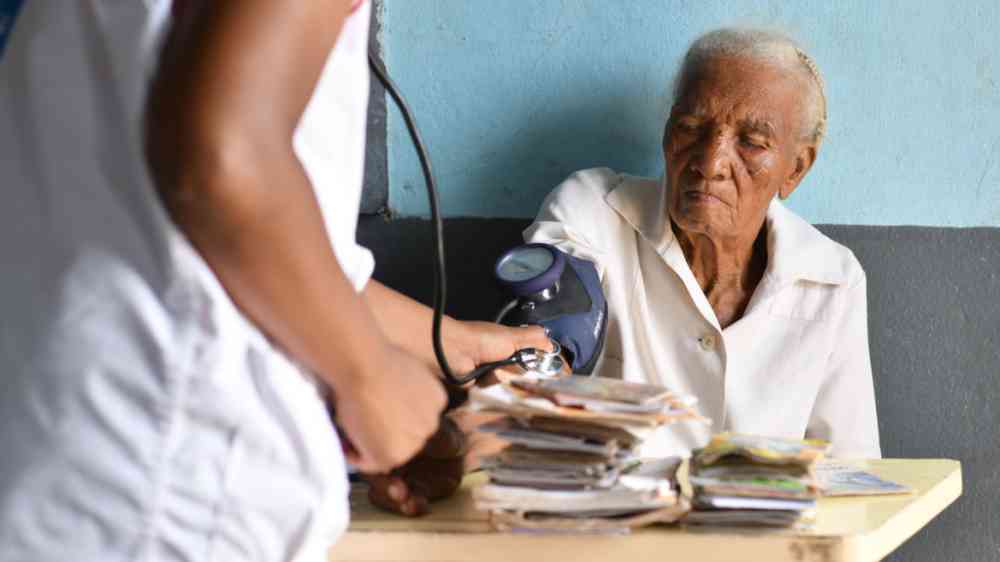Four ways climate information is helping health programs adapt to meet the climate challenge: Targeted and informed surveillance saving lives and livelihoods

As the world grapples with the realities of climate change, its far-reaching impacts are becoming impossible to ignore. Rising temperatures, shifting weather patterns, and the increasing frequency of extreme weather events are not just environmental concerns-they are public health emergencies. These changes are forcing us to reshape our health programs to ensure they remain effective and resilient in the face of these new challenges.
Climate change affects health in numerous ways, from heat stress and the exacerbation of respiratory diseases due to worsening air quality, to altering the spread of infectious diseases like malaria and dengue fever as warmer climates, where mosquitoes thrive, expand. The impacts are widespread and often disproportionately affect the most vulnerable populations, including those in low-income regions where health systems and infrastructures may already be under strain.
Traditional approaches to health programming are no longer sufficient in this rapidly changing climate. We must now account for the environmental factors that affect health outcomes, increase demand for health services, and impact the availability of health resources. This means integrating climate considerations into every aspect of our health programs, from planning and resource allocation to service delivery and emergency response.
A key strategy of this integration is the use of Climate Information Services (CIS). CIS involves collecting and analyzing climate data to predict and address the impacts of climate change on health. By using CIS, we can anticipate potential health crises and adjust our programs accordingly. Below are four real-life examples of how health programs are shifting to better respond to our changing climate.
Climate-informed early warning and response systems for malaria in Ethiopia
Ethiopia is implementing a tool that integrates malaria surveillance and climate data to generate forecasts and produce malaria early warning reports with up to 8-12 weeks lead time. Investing in a climate-informed early detection system built flexibility into malaria control programs, allowing them to adapt to changing climate conditions. Additionally, targeted and concentrated surveillance can create opportunities to control outbreaks as they happen while also reducing the risk of novel outbreaks.
Anticipatory action to reduce the impact of extreme weather events on health
This approach, spearheaded by the International Federation of the Red Cross and Red Crescent Societies (IFRC), represents a significant pivot in disaster risk management and health systems strengthening by emphasizing preparedness while also strengthening response and relief systems. It includes preparing for and mitigating the health threats of climate change through anticipatory action: IFRC links locally led humanitarian action with regional- and global-scale responses and surge support through forecast-based financing from the Disaster Response Emergency Fund.
PEPFAR's El Nino response: Lessons learned from food security and HIV/AIDS crisis funding
The 2015-2016 El Niño exacerbated food insecurity in Southern Africa, severely impacting vulnerable populations, including those living with HIV/AIDS. The U.S. President's Emergency Plan for AIDS Relief (PEPFAR) response included a $20 million grant to the World Food Programme to combat malnutrition and support HIV-affected households, reaching over 349,000 people. This case study underscores the importance of integrating CIS and fostering inter-agency collaboration to strengthen health systems and improve outcomes in future climate-related emergencies.
A health early warning system to reduce extreme heat impacts in Senegal
As climate change intensifies, early warning systems are essential to address the increasing frequency and severity of heatwaves, particularly in vulnerable regions like the Sahel. Improved monitoring, accurate forecasting, and strong community engagement are critical components of these systems, helping to protect health and strengthen resilience. This pilot program, supported by the National Oceanic and Atmospheric Administration, enhances regional preparedness through heat-health early warning systems, highlighting the need for improved monitoring, forecasting, and community engagement to mitigate these growing threats.
These approaches are looking beyond immediate risks to anticipate future threats and needs. By integrating climate considerations, we can ensure that our efforts to improve health outcomes worldwide are sustainable and effective in the long term.